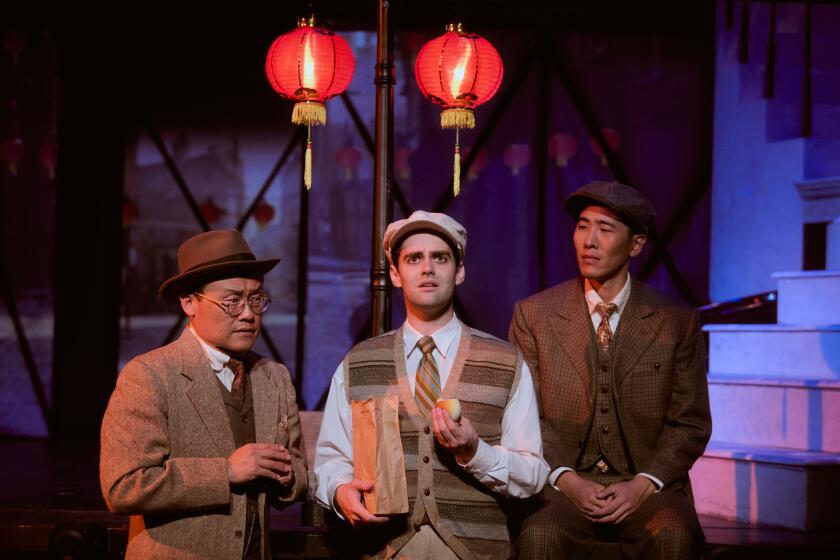Hitting the Louvre ceiling
A sign reads “The Mona Lisa is to your right” as you walk up the staircase in the stone, vaulted hall of the Louvre’s Sully wing.
Just beyond that, covering the entire 4,300-square-foot ceiling, is a fresh painting by contemporary American-born artist Cy Twombly.
As part of an effort to integrate contemporary art into this former home of French kings, Twombly has become the first American artist to add a permanent work to one of the country’s most cherished monuments, intimately bound in French history.
This week, during the painting’s public opening, the 81-year-old artist officially joined ranks with Eugène Delacroix, as well as Georges Braque, previously the most recent artist commissioned to paint one of the Louvre ceilings in 1953.
From the gilded ceilings in the Apollo Gallery, where Delacroix’s mythic sun god slays serpents, and bare-breasted women float above winged beasts, one can find Twombly’s “The Ceiling” just a few doors down. A flat sea of light blue filled in with visible brush strokes covers the simple, massive square block of what was once a plain white surface in the Greek Bronze Room, one of the oldest rooms of the former palace.
Spheres in shades of beige and greenish blues float along the edge, with a gouache, painterly effect revealing traces of the artist’s brush, and some of the canvas beneath. The names of seven ancient Greek sculptors are scrawled in large, careful, but clearly handwritten black letters over white rectangular bars.
“We don’t know what it is,” said Chiara Casadio, 20, who was visiting with her family from Florence, Italy. Lifting her shoulders toward her ears, she said, “Maa . . . it’s troppo! Too strong a contrast,” and pointed to the gold-rimmed columns that lined the room, and the ancient Greek and Roman metalwork on display behind glass cases that reflected Twombly’s blue sky.
“Will they really accept this in France?” asked Casadio, who continued to shake her head in unison with her large, energetically gesturing family around her.
But not everyone was surprised to see the new ceiling.
“Us Parisians are getting used to this kind of contrast,” said Hélène Vieau, the young guide for the Italian family, who pointed to Braque’s cutout blue and black birds on the ceiling next door.
That is partly due to the efforts of the Louvre’s current director, Henri Loyrette. Since he took the helm of the museum in 2001, he’s introduced permanent works of contemporary art by Anselm Kiefer and François Morellet and offered a host of temporary contemporary art shows.
Though Loyrette’s initiatives have sometimes spurred vivid controversy, he claims he is doing nothing new.
“We’re continuing with the renewal of history,” he said in an interview. “The Louvre was always the home of living artists.”
Pointing to 19th century paintings by Delacroix that were added onto walls built by King Louis XIV before him, Loyrette says that adding artistic decor to the Louvre “is profoundly linked to the history of the palace. . . . I always say that in the Louvre’s genes, there’s a need to incessantly move forward.”
The public seems to be catching on to Loyrette’s vision, as the number of young visitors to the museum continues to rise.
With three new, permanent contemporary works of art, “We’re starting to get a real feel for what the current team running the Louvre is after,” said Germain Viatte, 71, who came to see Twombly’s ceiling Thursday.
Whatever that goal may be, some of the museum’s short-term contemporary art exhibits have shocked visitors to such an extent that disgruntled art lovers wrote petitions calling for a stop to Loyrette’s contemporary shows. “A visual parasite on numerous works,” wrote Guillaume de Thieulloy in 2008 of a temporary exhibit of work by artist Jan Fabre. Among others, Fabre showcased a statue of a lifelike man with his nose pressed against a painting, and blood spurting out below him in a puddle.
But Loyrette says debate is “what the museum is for.”
“For me, a museum that dies is a museum that doesn’t arouse contemporary creation. It’s a museum that no longer arouses the contemporary eye, and is no longer questioned by our contemporaries, but is instead . . . turned exclusively toward its own heritage, and its own past,” Loyrette said.
Loyrette admits that with temporary shows, “we can allow ourselves to be more adventurous, take risks, and sometimes make errors” -- because after all, “my God, it’s temporary,” he said.
Twombly, who now lives in Italy, was chosen to contribute the ceiling in part because of his work’s “meditation on ancient art,” said Loyrette.
Twombly’s ceiling, which he designed for free, nevertheless required $1.6 million to make possible, which came from private donors, English collector Janet de Botton and the Gagosian Gallery.
It was meant to fit with the room, and at first glance, is unlike the gestural work, and rhythmic scribblings of busy forms, or the bright dashes of color associated with most of his paintings.
He also chose colors and the names of Greek sculptures to fit with the content of the room, which houses both Greek and Roman metalwork: jewelry, weapons and crockery used as early as the 9th century BC.
“I think the most beautiful compliment that we could have given Kiefer, Morellet or Twombly is to say that their work is perfectly integrated in the museum,” said Loyrette. “ . . . To say that it’s just perfectly right.”
More to Read
The biggest entertainment stories
Get our big stories about Hollywood, film, television, music, arts, culture and more right in your inbox as soon as they publish.
You may occasionally receive promotional content from the Los Angeles Times.






